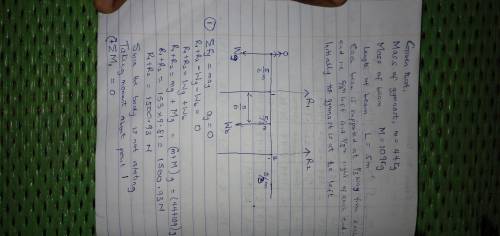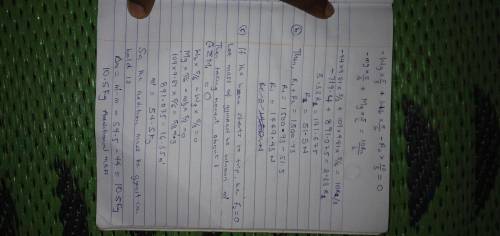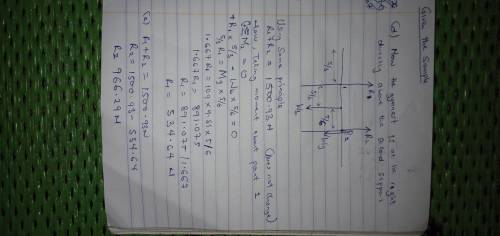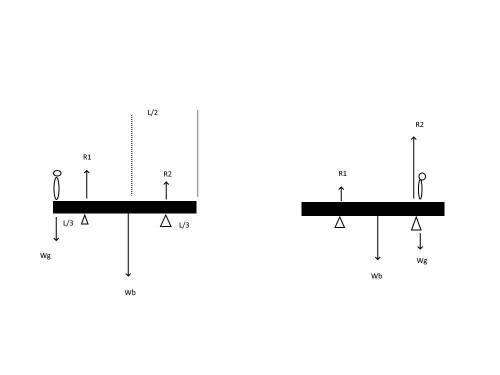
Physics, 15.04.2020 17:06 enrique3300
A gymnast with mass m1 = 44 kg is on a balance beam that sits on (but is not attached to) two supports. The beam has a mass m2 = 109 kg and length L = 5 m. Each support is 1/3 of the way from each end. Initially the gymnast stands at the left end of the beam.
1)What is the force the left support exerts on the beam?N
2)What is the force the right support exerts on the beam?N
3)How much extra mass could the gymnast hold before the beam begins to tip? kg
4)Now the gymnast (not holding any additional mass) walks directly above the right support. What is the force the left support exerts on the beam?N
5)What is the force the right support exerts on the beam?N
6)At what location does the gymnast need to stand to maximize the force on the right support?
a. at the center of the beam
b. at the right support
c. at the right edge of the beam

Answers: 2
Another question on Physics


Physics, 22.06.2019 17:40
Aball is thrown horizontally from a cliff at 8m/s .in what direction is the ball moving 2s later?
Answers: 1

Physics, 22.06.2019 19:40
It may seem strange that the selected velocity does not depend on either the mass or the charge of the particle. (for example, would the velocity of a neutral particle be selected by passage through this device? ) the explanation of this is that the mass and the charge control the resolution of the device--particles with the wrong velocity will be accelerated away from the straight line and will not pass through the exit slit. if the acceleration depends strongly on the velocity, then particles with just slightly wrong velocities will feel a substantial transverse acceleration and will not exit the selector. because the acc
Answers: 1

Physics, 22.06.2019 21:20
People with normal vision cannot focus their eyes underwater if they aren't wearing a face mask or goggles and there is water in contact with their eyes. in a simplified model of the human eye, the aqueous and vitreous humors and the lens all have a refractive index of 1.40, and all the refraction occurs at the cornea, whose vertex is 2.60 cm from the retina.with the simplified model of the eye, what corrective lens (specified by focal length as measured in air) would be needed to enable a person underwater to focus an infinitely distant object? (be careful-the focal length of a lens underwater is not the same as in air! assume that the corrective lens has a refractive index of 1.62 and that the lens is used in eyeglasses, not goggles, so there is water on both sides of the lens. assume that the eyeglasses are 2.05cm in front of the eye.)
Answers: 3
You know the right answer?
A gymnast with mass m1 = 44 kg is on a balance beam that sits on (but is not attached to) two suppor...
Questions

Mathematics, 24.10.2020 07:00




History, 24.10.2020 07:00

Mathematics, 24.10.2020 07:00

English, 24.10.2020 07:00



Mathematics, 24.10.2020 07:00


Chemistry, 24.10.2020 07:00


Mathematics, 24.10.2020 07:00

English, 24.10.2020 07:00

Mathematics, 24.10.2020 07:00

Physics, 24.10.2020 07:00

Mathematics, 24.10.2020 07:00


Mathematics, 24.10.2020 07:00














